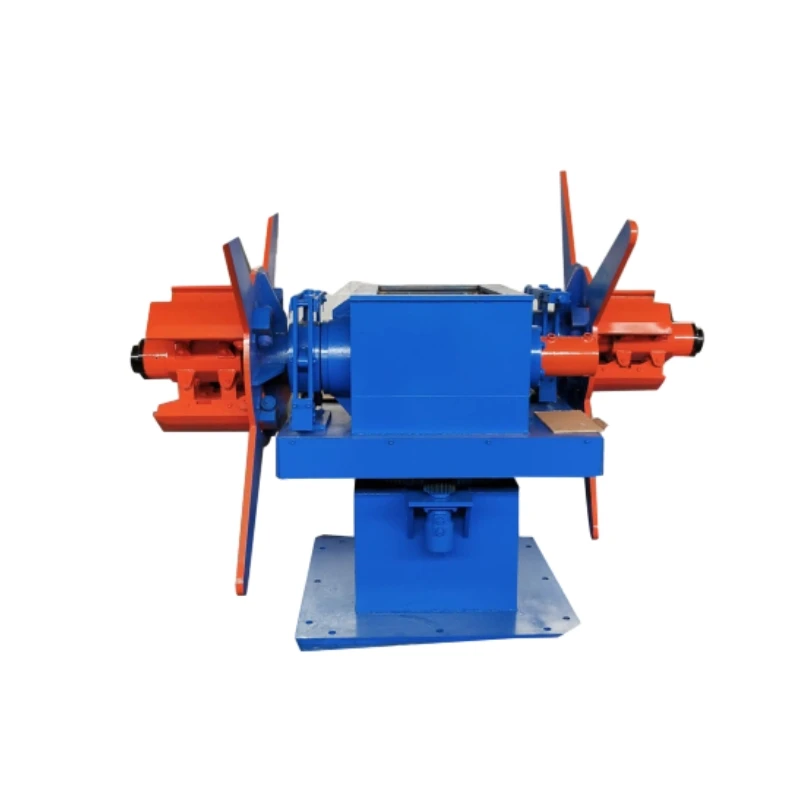ss tube mill machine
Understanding the SS Tube Mill Machine An Essential Tool for Modern Manufacturing
In today's industrial landscape, the demand for precision-engineered components is ever-increasing. One of the crucial machines facilitating the production of these components is the SS tube mill machine. This specialized equipment is designed to manufacture stainless steel tubes with high accuracy and efficiency, playing a pivotal role in various sectors, including construction, automotive, and aerospace.
What is an SS Tube Mill Machine?
A stainless steel tube mill machine is a complex piece of machinery that converts flat stainless steel strips into tubes. The process involves several stages, including slitting, forming, welding, and sizing. The SS tube mill’s design ensures that tubes produced are not only durable but also resistant to corrosion, making them suitable for numerous applications where traditional materials may fail.
Key Components of SS Tube Mill Machines
1. Slitting Unit The initial step in the tube manufacturing process is the slitting of stainless steel coils into narrower strips. This is essential for the subsequent processes, ensuring uniform width and quality.
2. Forming Section After slitting, the strips are fed into the forming section, where they are bent into a circular shape. This section typically utilizes a series of rollers that gradually shape the strip into a tube form.
3. Welding Machine Once the strips are formed into tubes, they are welded together to create a seamless structure. Modern SS tube mills use high-frequency induction welding or TIG welding processes which ensure strong joints that can withstand high pressures and stresses.
ss tube mill machine

4. Sizing and Calibration Unit After welding, the tubes pass through sizing and calibration units that ensure each tube meets the desired specifications for diameter and thickness. This step is crucial for maintaining quality control and consistency across batches.
5. Cutting Machine The final stage involves cutting the long tubes into required lengths. The cutting machines used are optimized for speed and accuracy to enhance productivity.
Applications of SS Tubes
Stainless steel tubes manufactured using tube mill machines are widely used across various industries. In the construction industry, they are employed as structural components for buildings, bridges, and other infrastructures due to their strength and resistance to rust. In the automotive sector, stainless steel tubes are critical for making exhaust systems, fuel lines, and hydraulic systems. Moreover, they find applications in the aerospace industry, where lightweight and high-strength materials are vital for aircraft components.
Advantages of Using an SS Tube Mill Machine
The advantages of employing an SS tube mill machine are numerous. Firstly, the precision engineering of these machines allows for the production of tubes with exact dimensions, reducing waste and improving efficiency. Secondly, the automation of the process means that production speeds can be significantly increased, meeting the high demands of modern manufacturing. Furthermore, the robust design of stainless steel tubes formulated through mills ensures durability, leading to lower long-term costs associated with replacement and maintenance.
Conclusion
In conclusion, the SS tube mill machine represents a key innovation in the manufacturing sector, enabling the production of high-quality stainless steel tubes that are indispensable across multiple industries. With continuous advancements in technology, these machines are becoming more sophisticated, allowing manufacturers to produce even more complex and specialized products efficiently. As the industrial landscape evolves, the role of SS tube mill machines will remain crucial in meeting the growing demands for high-performance materials.
-
High Frequency Straight Seam Welded Pipe Production Line-BzZhou Xinghua Machinery Equipment Manufacturing Co., LTD.|line pipe steel&welded gas pipeNewsJul.30,2025
-
High Frequency Straight Seam Welded Pipe Production Line-BzZhou Xinghua Machinery Equipment Manufacturing Co., LTD.|High Precision&Automated SolutionsNewsJul.30,2025
-
High Frequency Straight Seam Welded Pipe Production Line - BzZhou Xinghua Machinery Equipment Manufacturing Co., Ltd.NewsJul.30,2025
-
High Frequency Straight Seam Welded Pipe Production Line-BzZhou Xinghua Machinery Equipment Manufacturing Co., LTD.|Precision Welding, High EfficiencyNewsJul.30,2025
-
High Frequency Straight Seam Welded Pipe Production Line|BzZhou Xinghua|Precision Welding&EfficiencyNewsJul.30,2025
-
High Frequency Straight Seam Welded Pipe Production Line - BzZhou Xinghua|Precision Engineering&EfficiencyNewsJul.30,2025


